This document provides information about a data structures and algorithms lab course. It outlines the course instructors, grading breakdown, required tools and links, objectives, and introduces basic C programming concepts like program structure, I/O operations, functions, and structures. Exercises are included throughout to practice each concept, and homework assignments are described at the end involving Fibonacci numbers, a Bulls and Cows game, and functions for polynomial operations.
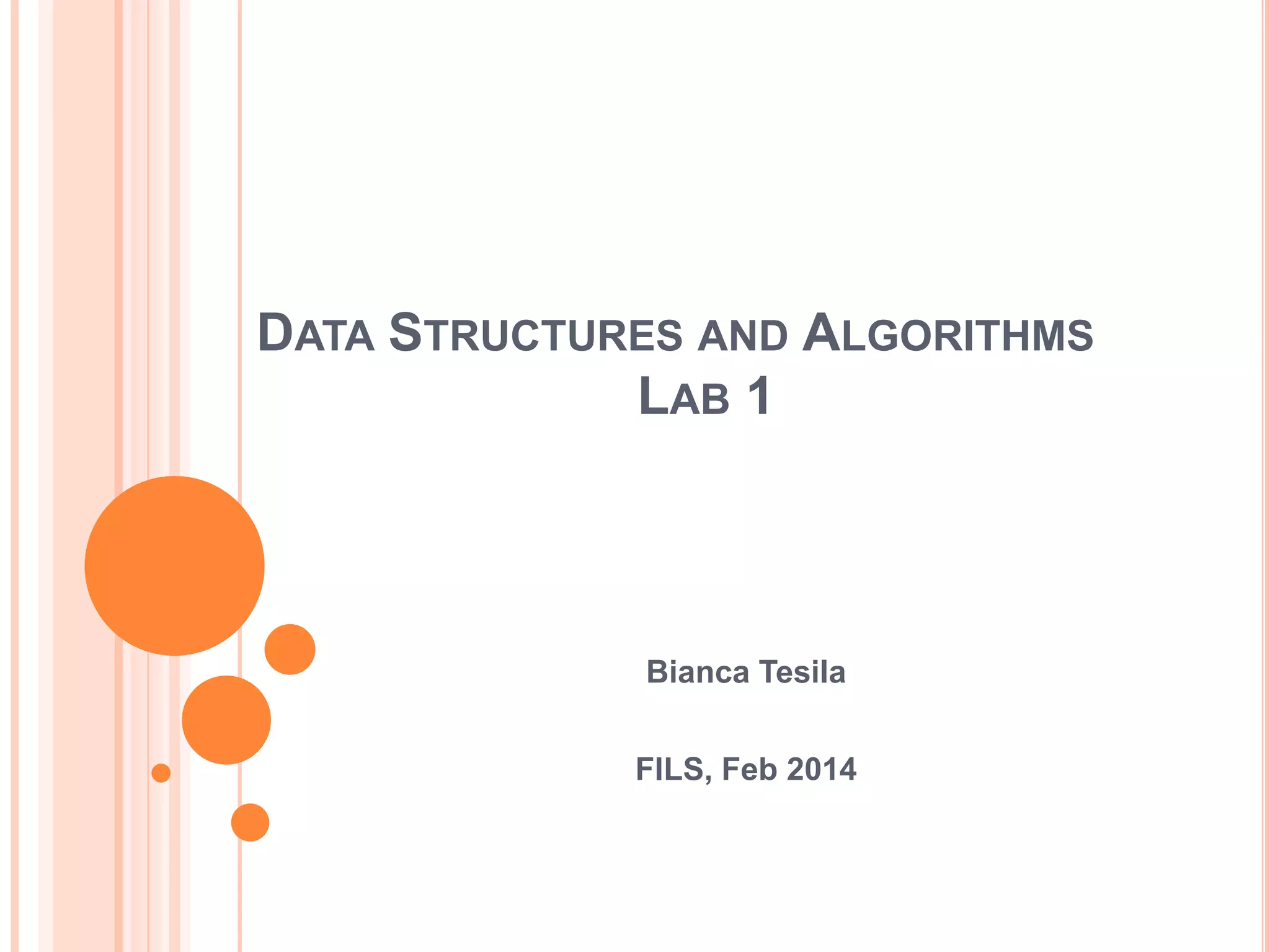

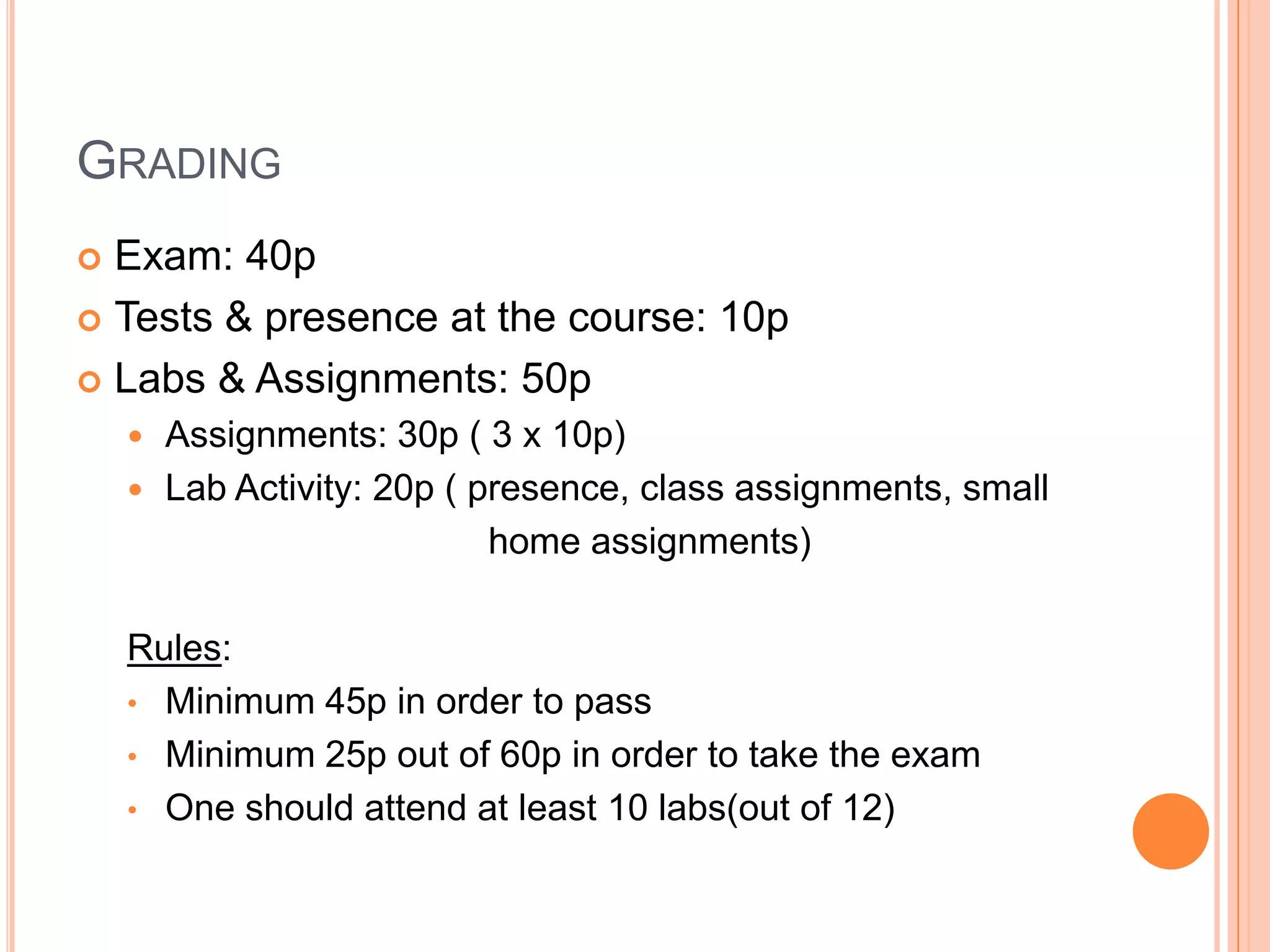
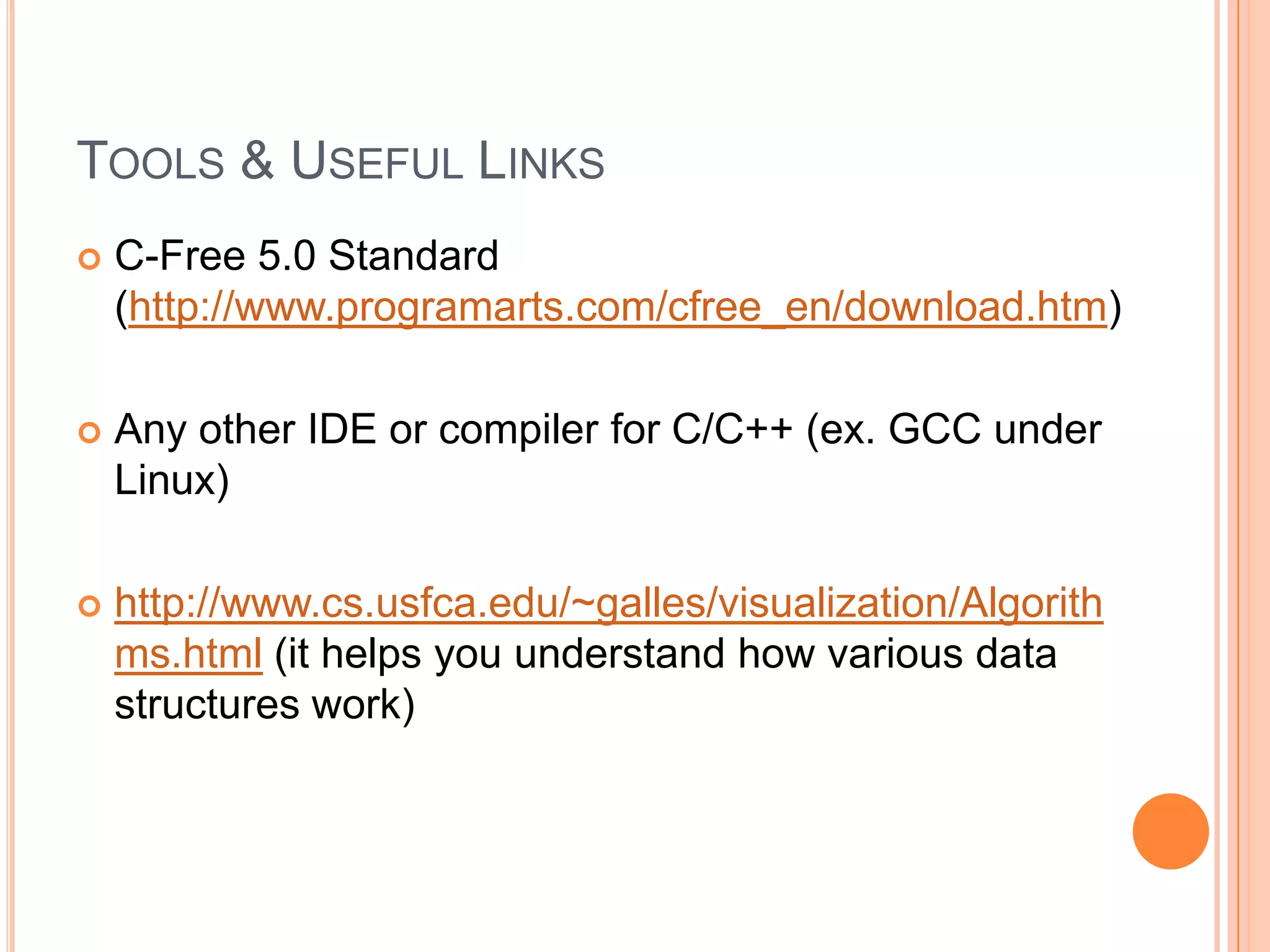
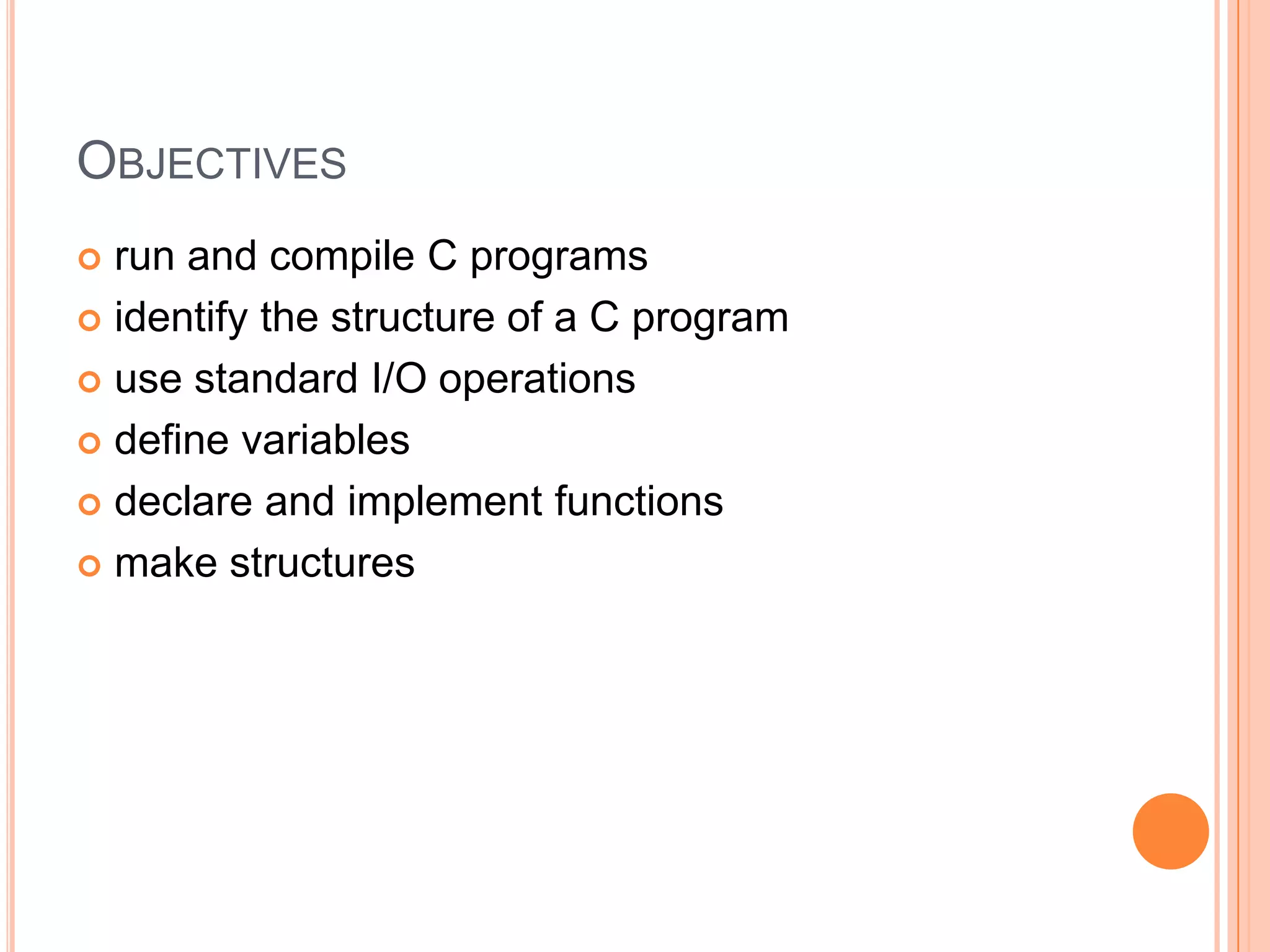
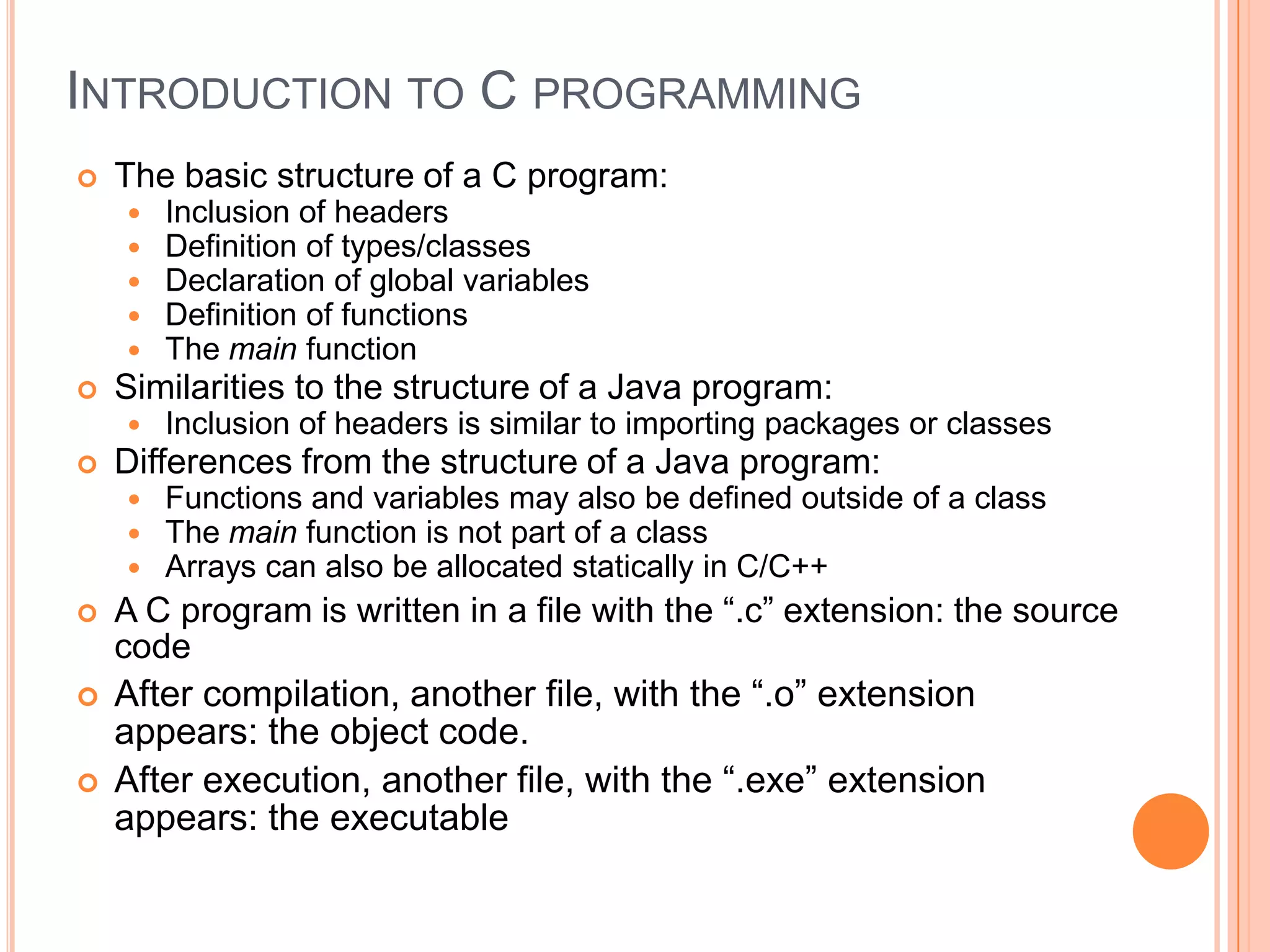
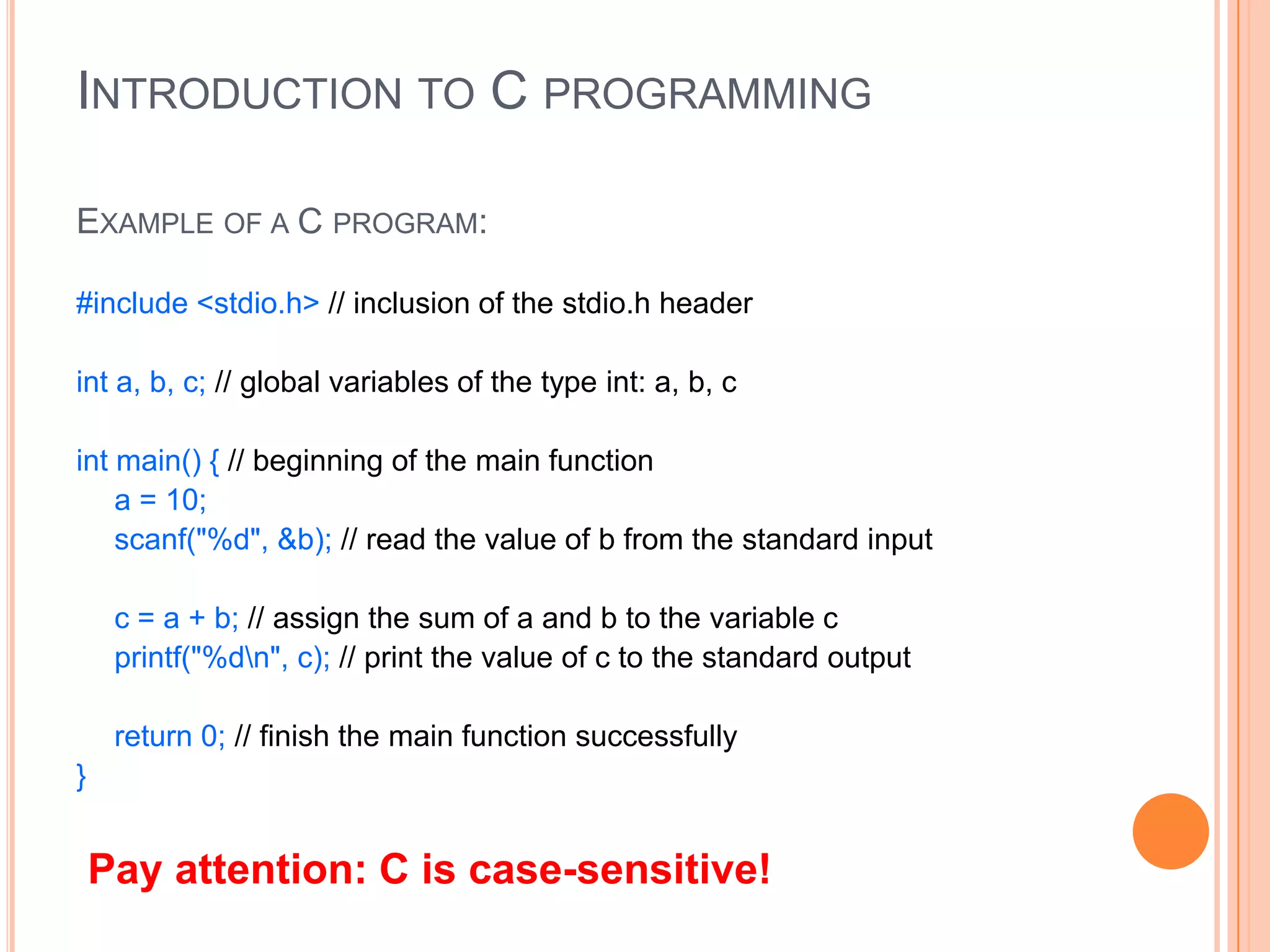
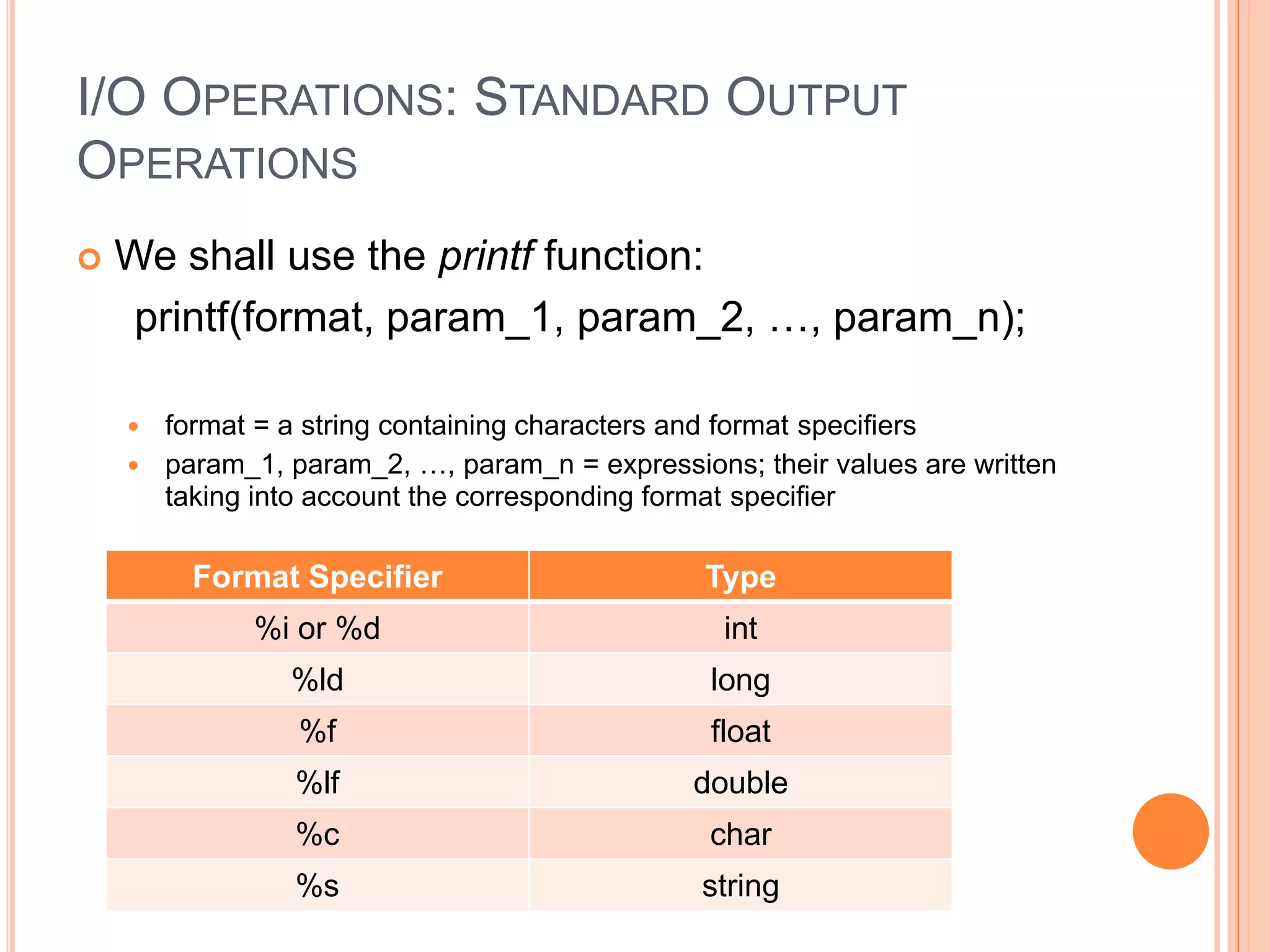
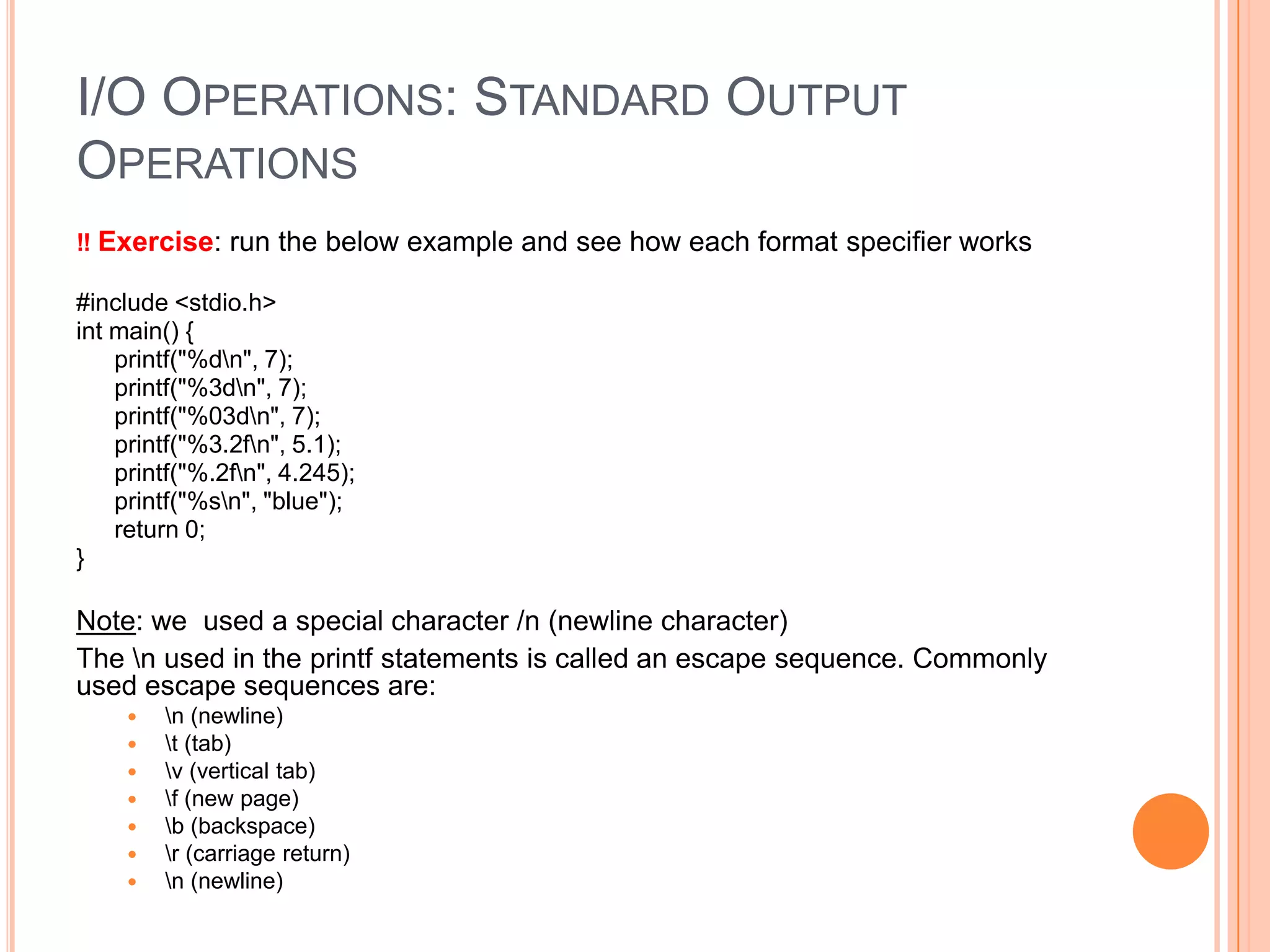
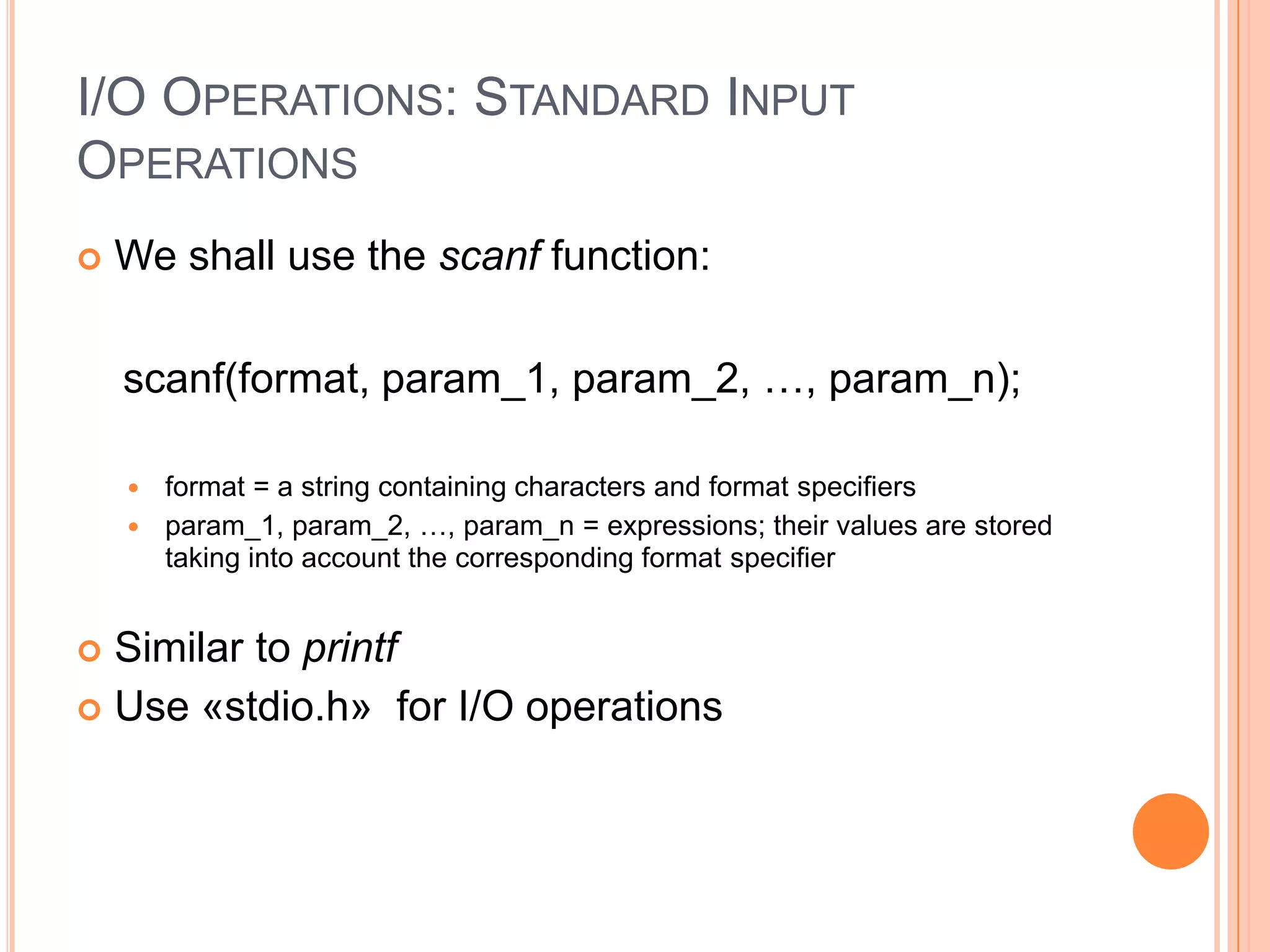
![I/O OPERATIONS: STANDARD INPUT
OPERATIONS
#include <stdio.h>
int main () {
char name [80];
int age;
printf ("Enter your family name: ");
scanf ("%s",name);
printf ("Enter your age: ");
scanf ("%d", &age);
printf ("Mr. %s , %d years old.n“, name, age);
return 0;
}](https://image.slidesharecdn.com/datastructuresandalgorithms-lab1-140215095658-phpapp01/75/Data-structures-and-algorithms-lab1-11-2048.jpg)
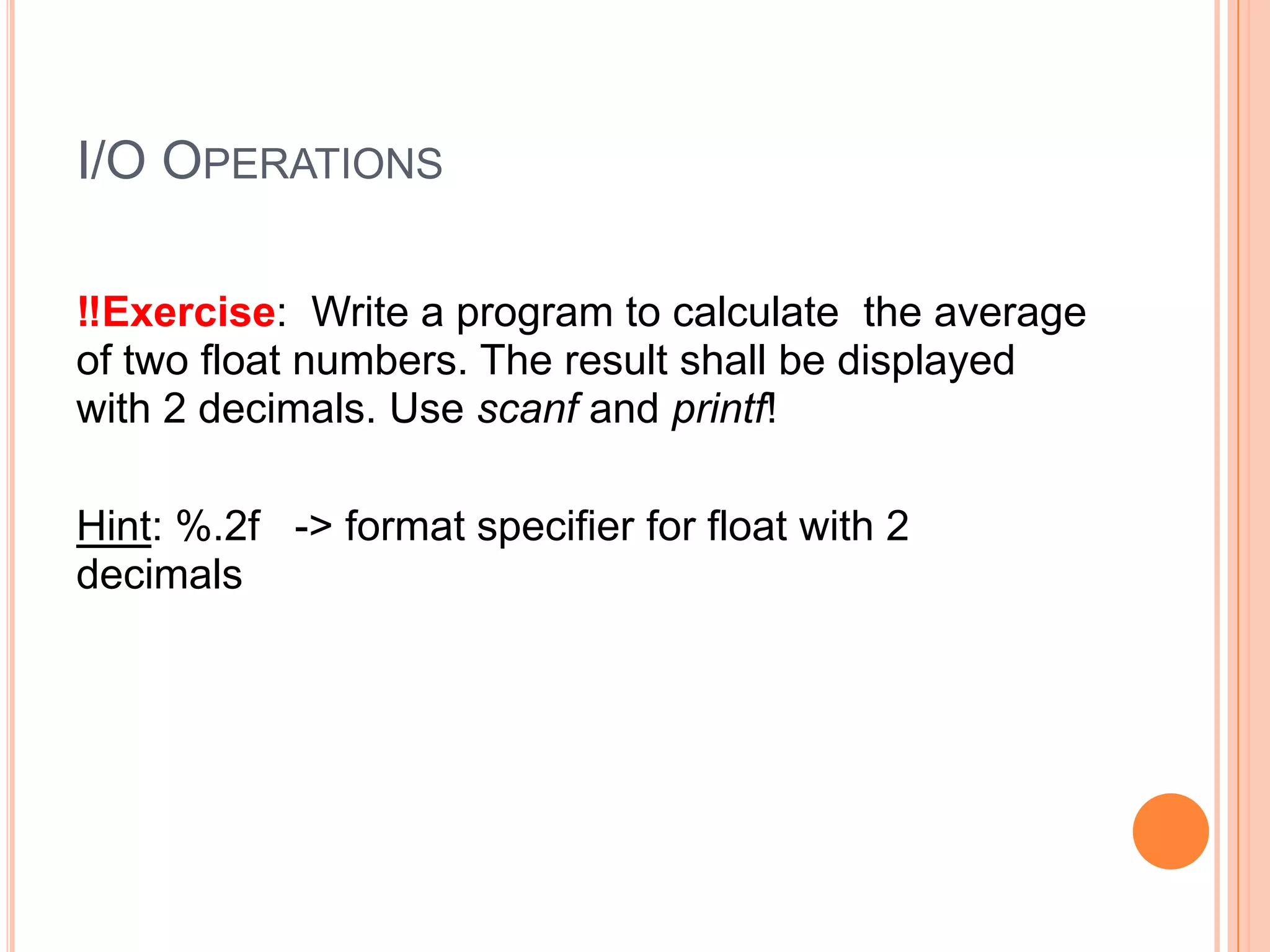

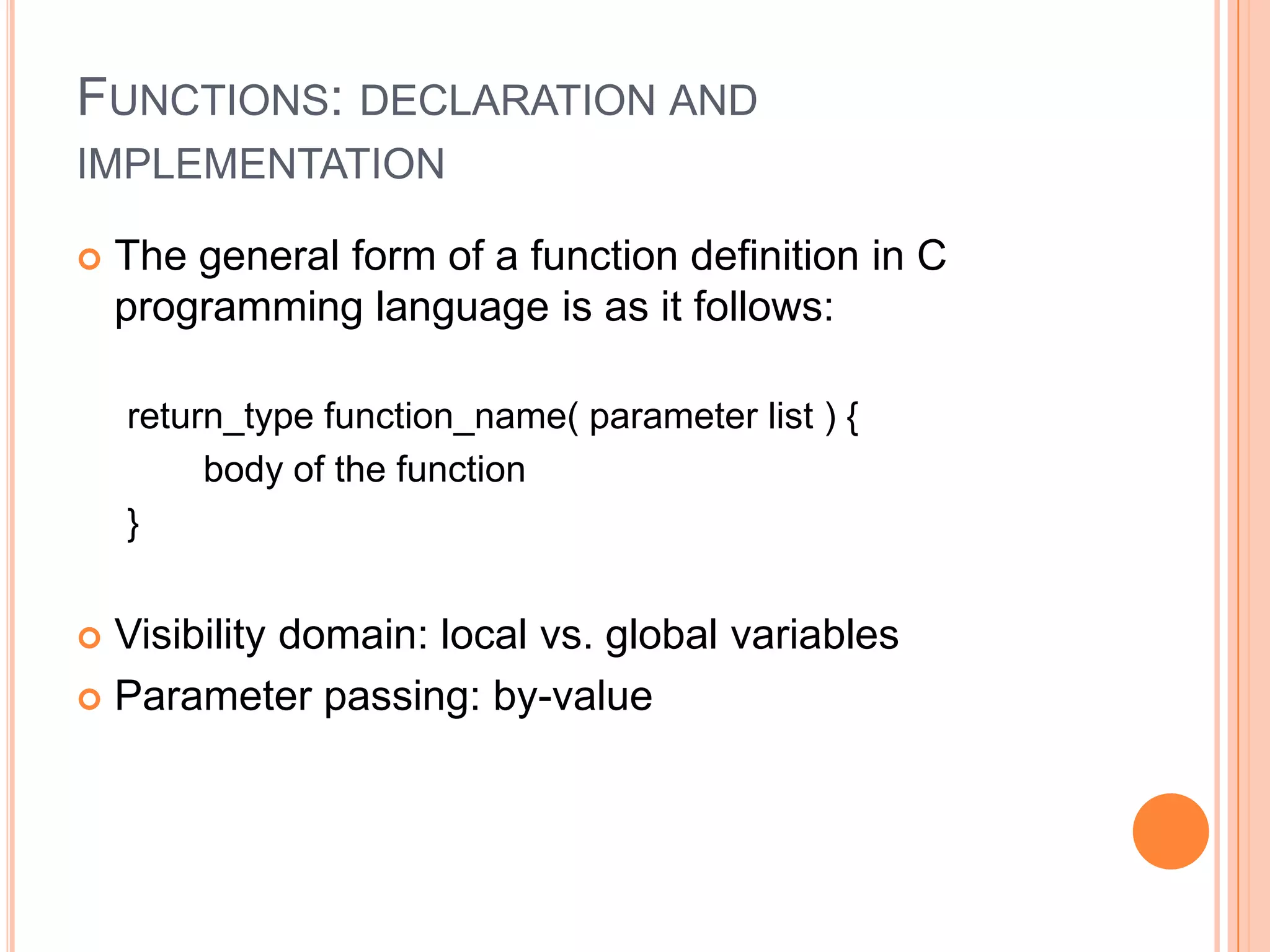
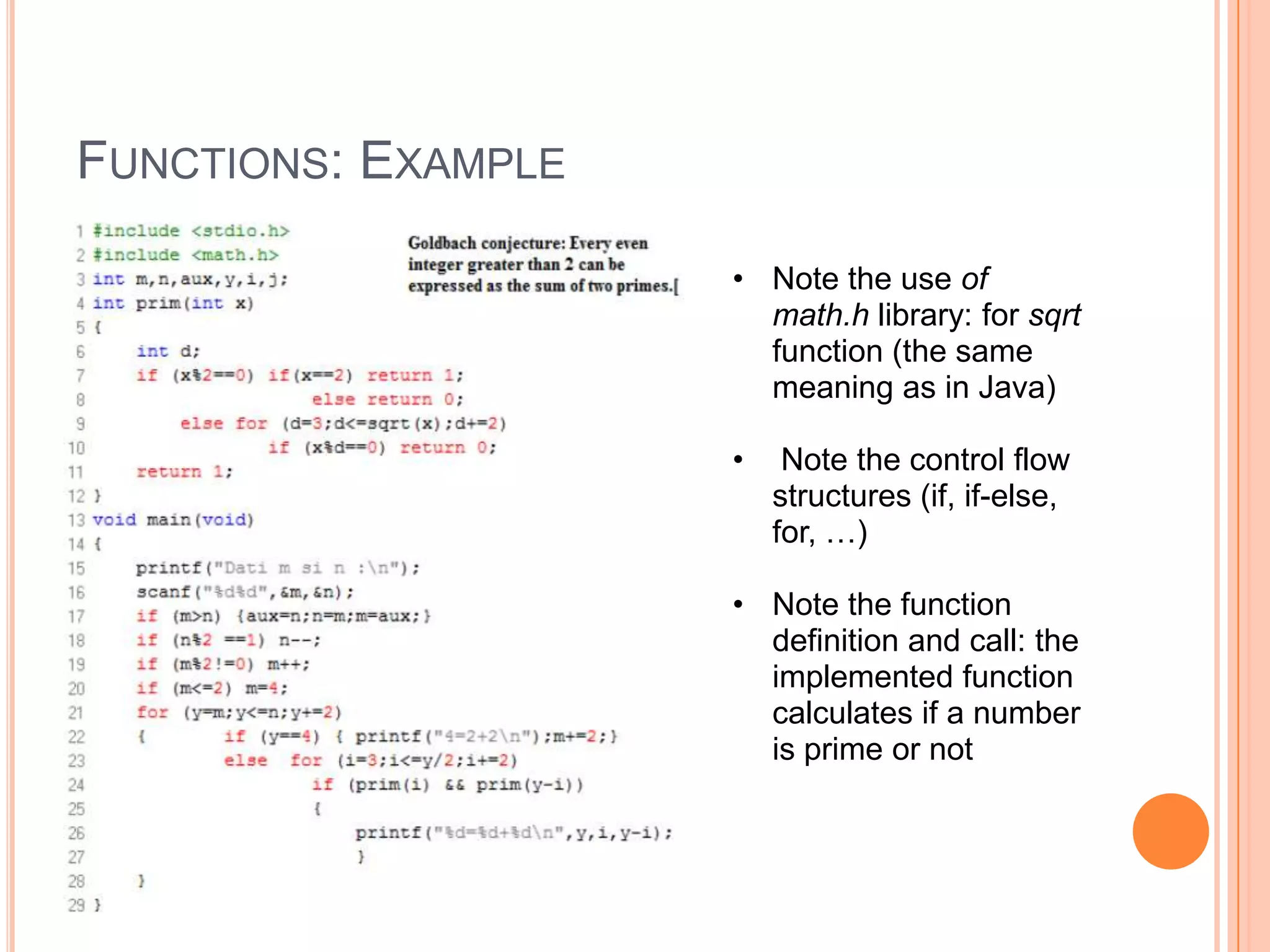
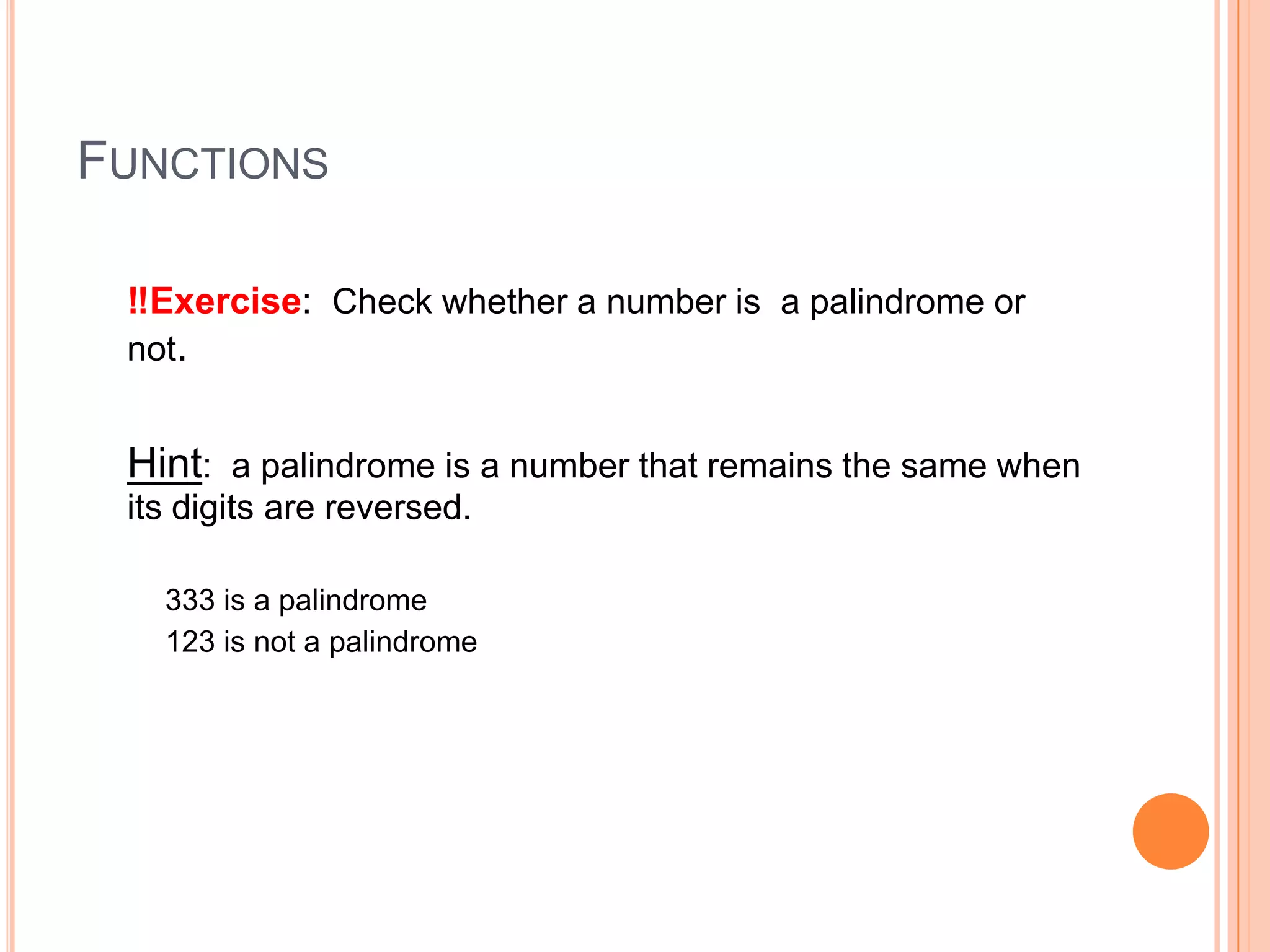
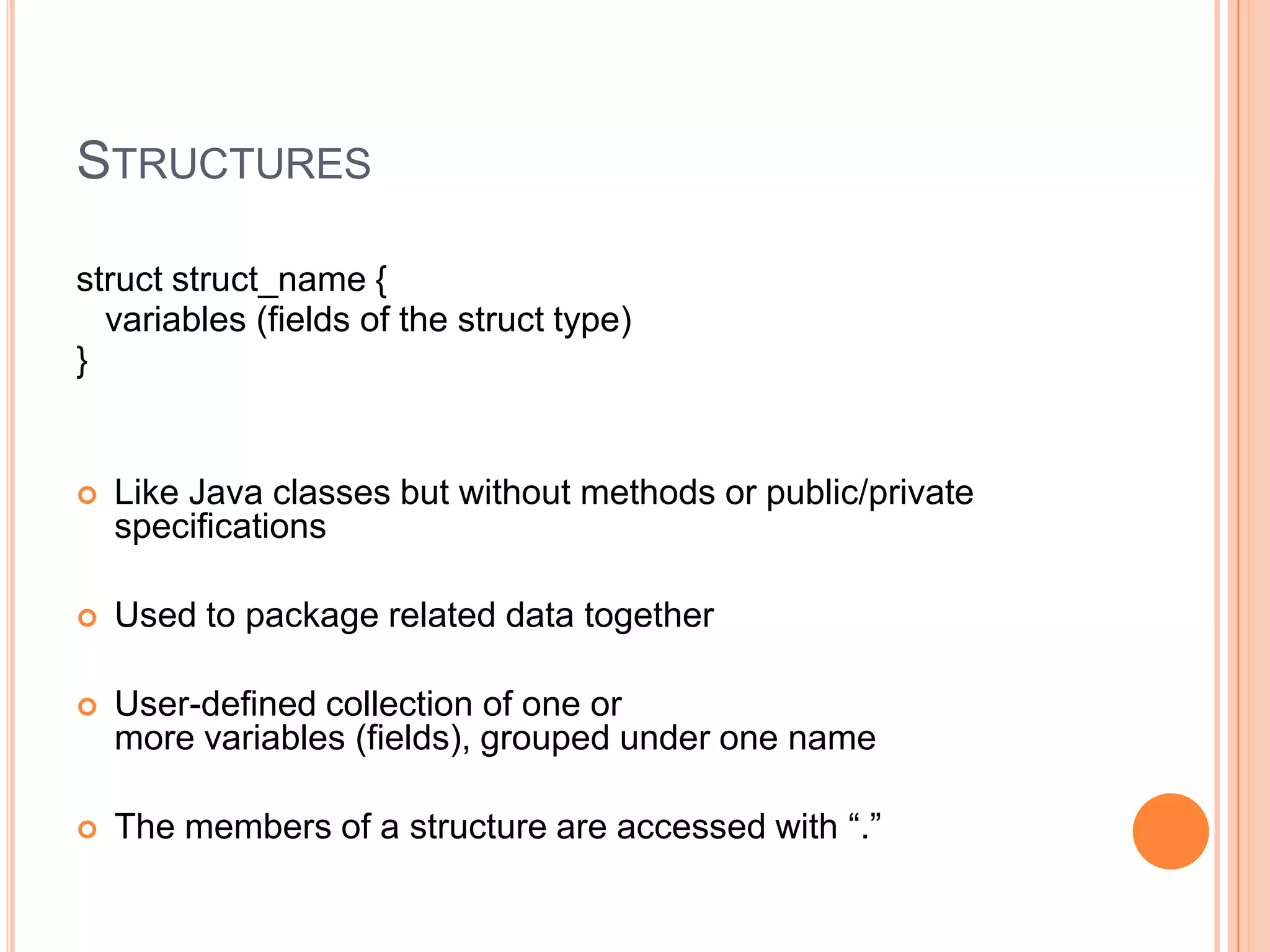
![STRUCTURES: EXAMPLE
struct date {
unsigned int day;
unsigned int month;
unsigned long year;
char name_day[3];
char name_month[4];
};
typedef struct date {
unsigned int day;
unsigned int month;
unsigned long year;
char name_day[3];
char name_month[4];
} date;
typedef struct date date;
date today;
date today;
‼ date is now a type
‼ typedef allows you to declare
instances of a struct without
using keyword "struct"](https://image.slidesharecdn.com/datastructuresandalgorithms-lab1-140215095658-phpapp01/75/Data-structures-and-algorithms-lab1-18-2048.jpg)
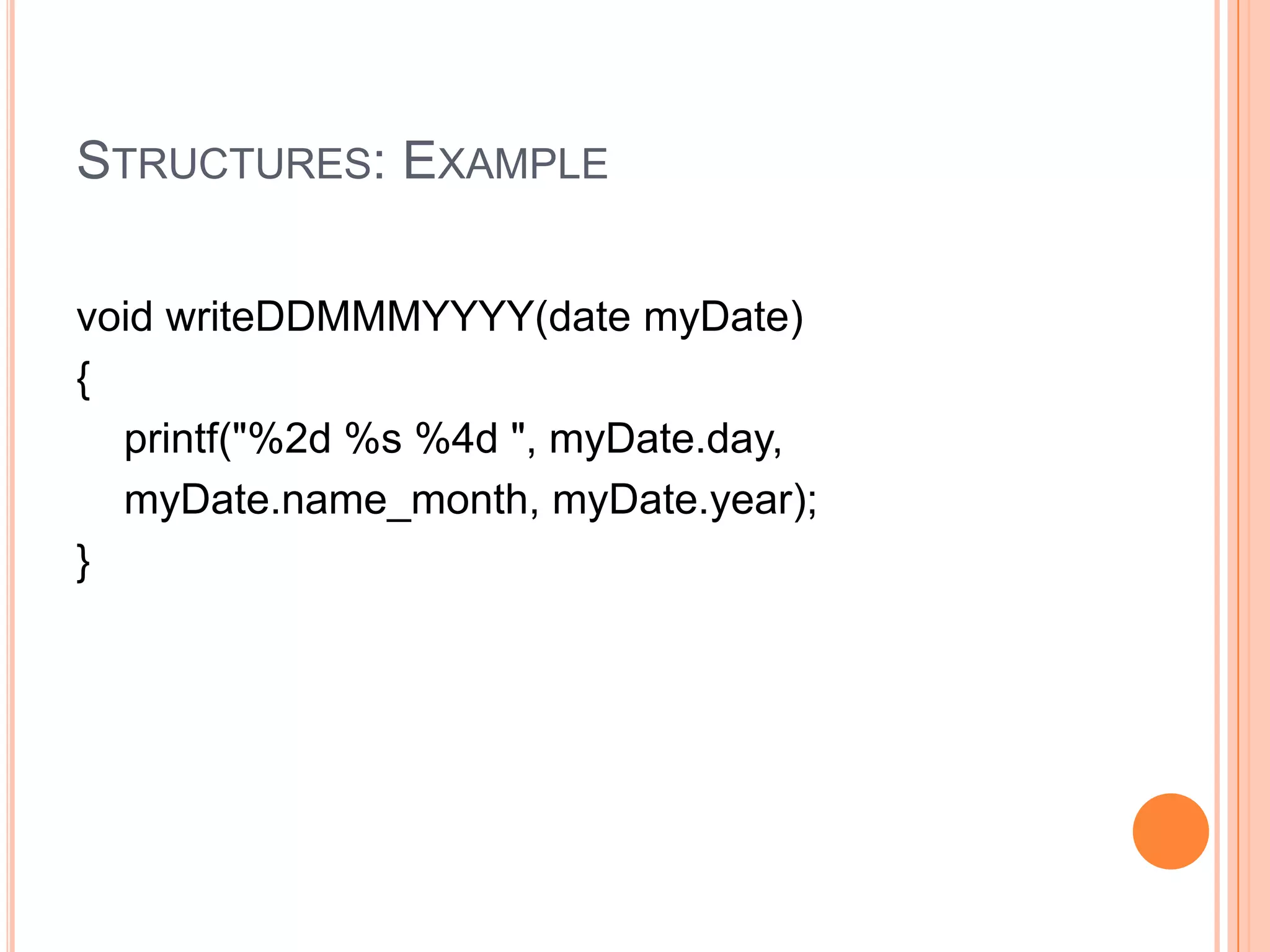
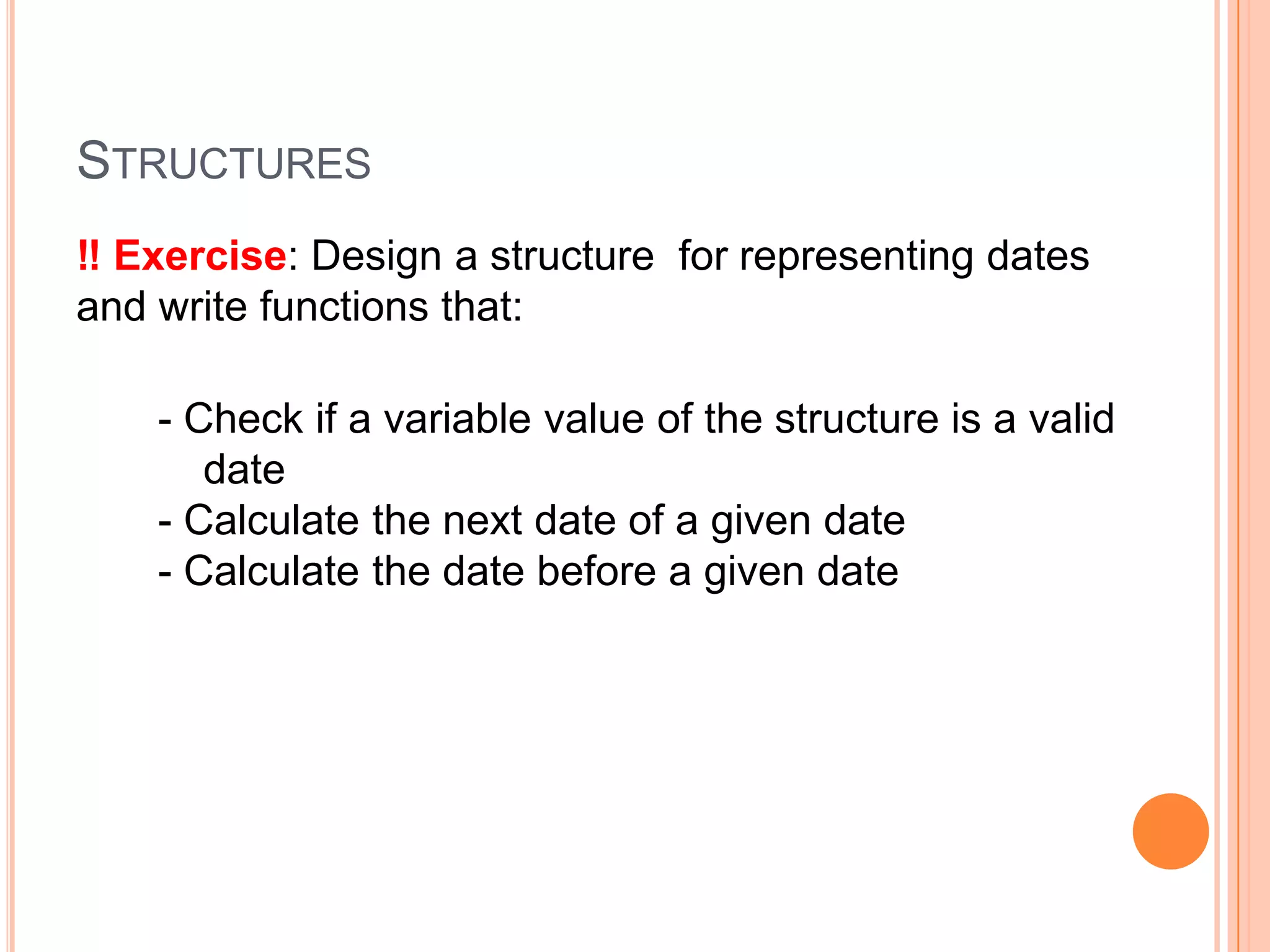
![HOMEWORK
Finish all the lab exercises.
Write a program that displays the first ten Fibonacci numbers.
Write a program to simulate the Bulls and Cows
game(http://en.wikipedia.org/wiki/Bulls_and_cows), by giving
two input numbers.
Write functions for writing, reading, addition and
multiplication of rare polynomials.
Rare polynomials with integer coefficients are polynomials
of large degrees and many coefficients equal to 0. They
can be represented by a data structure defined as:
typedef struct TMonom
{
int coefficient;
unsigned int exponent;
}TMonom;
TMonom[50] polynomial;](https://image.slidesharecdn.com/datastructuresandalgorithms-lab1-140215095658-phpapp01/75/Data-structures-and-algorithms-lab1-21-2048.jpg)